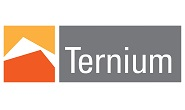Steel Mills

Ternium Plans to Continue Increasing Market Share
Written by Laura Miller
August 3, 2023
Latin American steelmaker Ternium remains optimistic that positive trends in the Mexican market will help it to continue increasing its market share.

Executives on the company’s second quarter earnings call with analysts again touted the trends of nearshoring in the manufacturing sector and import substitution as two of the main opportunities it plans to take advantage of.
Additionally, a major competitor is currently out of the market, with no end in sight for its troubles and no clear indication of when it might return to producing steel, the company said.
CEO Maximo Vedoya said on the earnings call that before Ternium built its Pesqueria facility, the manufacturing industrial sector represented 50% of apparent flat steel use. That has since risen to 66% over the past year.
“This sector demands high value-added products that require technology know-how and lengthy certification process,” Vedoya said.
“A focus on sophisticated products and service enable us to compete based on differentiation, customer service and product development,” he added.
Linked to this dynamic, the trend of nearshoring is happening even faster than Ternium had anticipated. “The pace of investment in the north of the country has been very significant, and it has so far captured more than two-thirds of the total nearshoring demand coming to Mexico,” Vedoya noted.
Ternium’s new slab mill in Pesqueria will be a key part of its growth strategy in the region, he said. The integration of its facilities will allow Ternium to substantially accelerate its capacity to respond to changes in the market.
With the company’s downstream investments, it is “going deeper into new value-added products, which will help us better serve our customers in the automotive, renewable energy and home appliance industries, among others. These projects represent an excellent opportunity for us to continue capturing demand from high-end steel products in Mexico,” he said.
Those downstream investments include the addition of a 1.5-million-tons-per-year pickling and tandem cold mill, a 500,000-tpy galvanizing line, and related finishing equipment to its Pesqueria complex.
Currently, Ternium is seeing many auto parts, HVAC, white goods, and electric motor customers increasing capacity and moving production to Mexico.
And in a couple years, there will be more demand from automotive customers. Vedoya cited Tesla coming to Monterrey and Kia announcing a huge investment right beside Ternium’s plant in Pesqueria as prime examples.
When asked if Ternium will be able to maintain its shipment and production levels once Ahmsa returns to production, Vedoya said he didn’t have a clear answer.
“Clearly some of the market share we are gaining is against Ahmsa, that’s for sure,” Vedoya said. “Nevertheless, again, there’s a lot of imports, and we think we are more than capable of fighting those imports, if we have the volume or production.”
Another thing to take into account, he noted, is that “it’s very difficult that Ahmsa come back at the level of production that they have when the stopped.”
He estimated Ahmsa was producing between 300,000 tons and 350,000 tons each month before its production stoppage in December. CFO Pablo Brizzio noted that the month prior to shutting down completely, that number was only ~100,000 tons.
“So even if they return to the lowest number that they were producing, it’s not a significant amount of tonnage back to the market,” Brizzio said. Even if Ahmsa does begin producing again, “it will take some time to reach a certain level of production.”

Laura Miller
Read more from Laura MillerLatest in Steel Mills

Cliffs unveils new hydrogen-powered stainless line in Ohio
CEO Lourenco Goncalves, flanked by state leaders and union reps, touted the project as proof that US manufacturing is not only alive, but also advancing.

Cliffs idles Steelton, Riverdale, and Conshohocken operations
Cliffs has idled facilities in Riverdale, Ill., and Conshohocken and Steelton, Pa.

Radius loss narrows, volumes climb in ‘healthy’ West Coast market
Stronger steel demand in the Western US, rising scrap flows, and improved rolling mill utilization drove sequential gains for Portland, Ore.-based Radius Recycling.

AISI: Raw steel production backs off multi-year high
US raw steel output edged lower last week after hitting a multi-year high in mid-June, according to the American Iron and Steel Institute (AISI).

Private equity firm Atlas Holdings to acquire Evraz North America
Atlas Holdings said it has signed a definitive agreement to acquire Evraz North America (Evraz NA). The Greenwich, Conn.-based private equity firm said it expects the deal for the Chicago-based steelmaker to close in the second quarter of 2025 subject to various closing condition.
